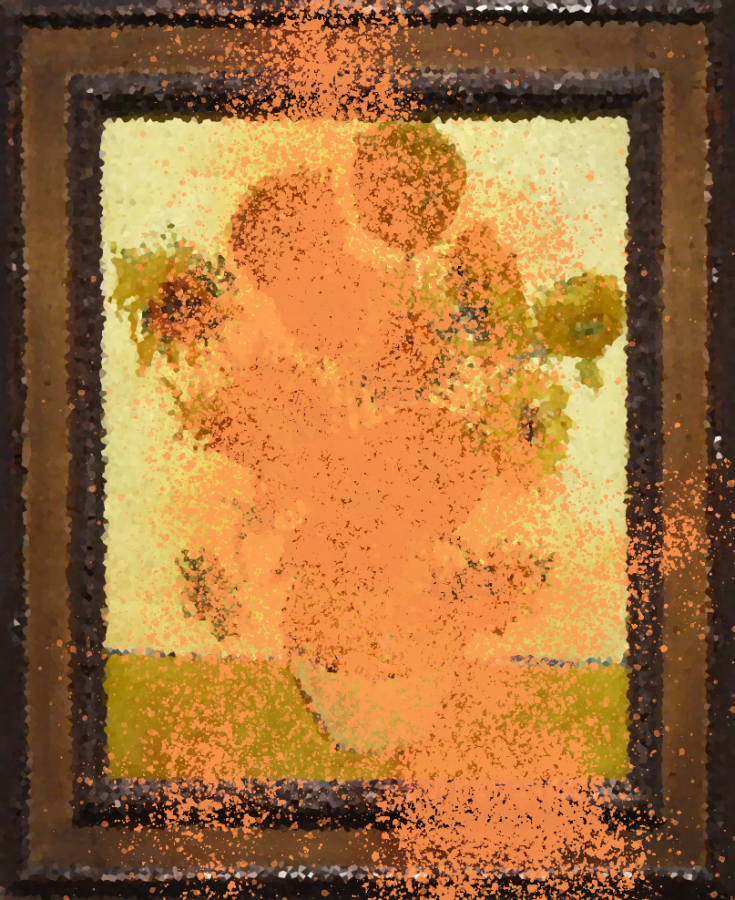What is worth more, art or life?
Climate Change Activists Resort to Drastic Measures
Recent videos have surfaced on the internet featuring climate change activists throwing a variety of foods onto famous paintings such as Monet’s “Les Meules,” van Gogh’s “Sunflowers” and Da Vinci’s “Mona Lisa.” The action was bold and the public had mixed feelings regarding whether the act was justified or not. None of the paintings were harmed as they are protected by glass.
According to journalist Cara Buckley, the protesters’ aim is to “pressure governments to stop the extraction and burning of fossil fuels” as the issue of climate change has become more apparent. To their defense, typical actions to bring awareness to the subject such as protests, lobbying, civil disobedience and petitions have not done enough to grasp the public’s attention while throwing a can of soup at a van Gogh painting did. Whether it was negative or positive, the protesters’ goal to grab people’s attention worked. However, does it motivate people to support the cause?
On Twitter, the video of the protesters throwing the soup and shakily gluing their hands to the wall went viral. The protester on the left then proceeded to recite the premise of their cause, in which she says “What is worth more, art or life?” The tweets in response to the uploaded video express a wide dynamic of complex reactions.
These are some of the tweets:
“How is that Van Gogh’s fault though”
“The painting is under glass. These girls are right and effective.”
“I’m more concerned about the painting. Send them to prison.”
“Given they were able to do it so easily I would say that painting is as well protected as the environment, not at all.”
“I listened to them too. However, if this is an act of saving the planet, I don’t want to be associated with planet-savers. Consider that a success.”
“If they got your attention, then they protested successfully. I was shocked too but having seen this, I understand. Listen to what they’re saying.”
“Vandalism is not the way to protests, they have a point in what they said but I’m sorry I don’t agree with this action.”
Most people were angry because they were under the impression that the activists destroyed the paintings, but in reality, they didn’t. To understand their purpose is to understand that their intention was never to harm the paintings, as the paintings were protected by glass. Rather, the intention was to grab the attention of others and draw it to the issue of climate change.
While drastic measures are necessary to address such a prominent issue, this action is where they lose the focus of those who already don’t believe in climate change. Oftentimes, people don’t want to be associated with something they see as damaging or a bad image, as it pushes people away more than it pulls them in. But, what can be done to drastically catch the attention of the public without some sort of controversy? We are facing a climate crisis and it seems no one knows how to generate this conversation in a proper manner.
Carbon dioxide emissions have increased to 419 parts per million from 378 parts per million in 2005, the global temperature has risen by 1.01 degrees Celsius since 1880, the Arctic sea ice minimum has decreased by 12.6% since 1979, ice sheets have decreased by 427 billion metric tons per year, sea levels have risen by 4 inches since 1993 and the ocean has warmed by 337 zetta-joules since 1955.
Some argue that the Earth has changed throughout history, which is true, but “the current warming is happening at a rate not seen in the past 10,000 years.” It is time to trust science and generate conversation. Clearly, methods such as flyers, protesting, Instagram posts and direct actions are ineffective. It will take more than a few people to generate change, we must all be acutely aware of the circumstances that will follow us. While some people may not agree with the actions these protesters took, I must say, at least they did something to get people talking, for what it was worth.
Your donation will support the student journalists of Saint Louis University.



